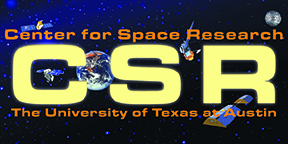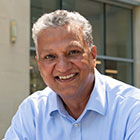 |
 |
 |
 |

Dr. Srinivas Bettadpur
Spring Semesters: I am teaching ASE 379L.
ASE 379L LEO for EO - This is the second undergraduate orbits class at UT ASE/EM, following ASE 366K (Spacecraft Dynamics). Here we explore the more practical and advanced orbit design topics for space applications. We study the effect of oblateness and drag perturbations on space mission design. We look in detail at the relative geometry of the terrestrial observer on a rotating Earth, the satellite, and the Sun, including topics such as scene, illumination, shadow, etc. As time permits, other topics may be included.
(I no longer teach this, since 2022) ASE 387P.2 Mission Design - Selection of topics as per interest and available time – Space Mission Scope: Needs, Goals, and Objectives; Space mission architecture; Design Reference Mission; Mission Phases; Technology Readiness Levels; Concept of Operations. Space Environment: Launch loads, Radiation (ionizing & non-ionizing), Density, Thermal Environment). Orbit Corrections and Maintenance: Dynamics of general impulsive thrusts (in-plane & out-of-plane); Orbit Maintenance decision cycle; Mean orbital elements, Lifetime prediction with semi-analytical methods. Orbit Transfer: Patched Conics: Spheres of influence; Departure Asymptotes & Oberth effect; Phasing; Dynamics of the Flyby problem. Constellations: Motivation and current trends; Sensor and Target viewpoints; Swath, access zone, footprint, ground track; Metrics of constellation design; Multiple plane constellations and phasing (e.g. sequential & Walker constellations). Lambert’s problem: General theory.
Fall Semesters: I alternate the following classes, as per need and interest.
ASE389P.2 Satellite Geodesy - This graduate class covers the modeling, space-based measurement, and applications of the Earth’s gravity field. Topics in forward methods include mathematics and physics of the geopotential and its gradients, and spherical harmonic models for the geopotential. We discuss observation of the geopotential using dynamical/variational methods and in situ space-based methods. Inverse methods cover the inference of mass distribution given the knowledge of the geopotential field, and its various applications. Course includes the modeling and application of measurements of the geopotential field pertaining to global mass flux studies and height systems.
(When possible) ASE 389P.11 Advanced Satellite Geodesy - Study kinematics and dynamics of displacement and Earth orientation. Learn the determination of time and reference frames. Explore deformations of the Earth due to tides and mass loading. Study modern space geodetic applications.
(Occasionally) ASE 388P.2 Celestial Mechanics - N-body problem; three-body problem; restricted three-body problem; Jacobian integral; zero-velocity curves; equilibrium points; stability; linearized solutions; variational equations; periodic orbits; the two-body problem; variation of parameters; Lagrange's planetary equations; applications to near-earth and deep-space trajectories; numerical methods.